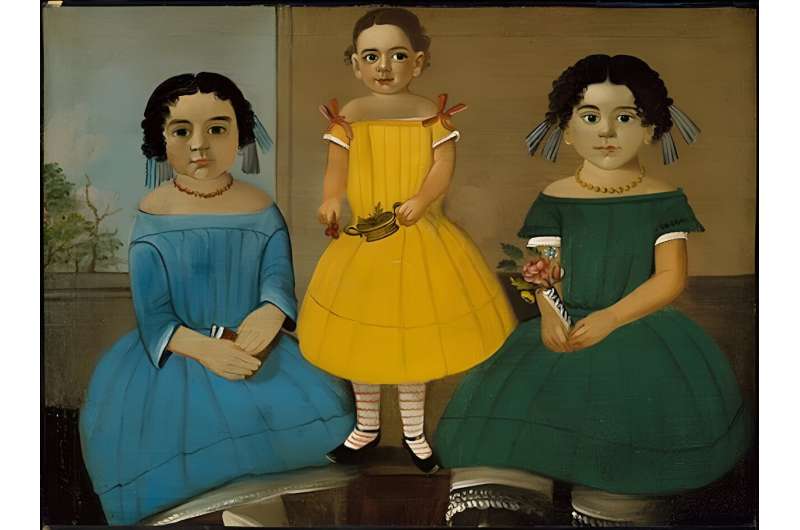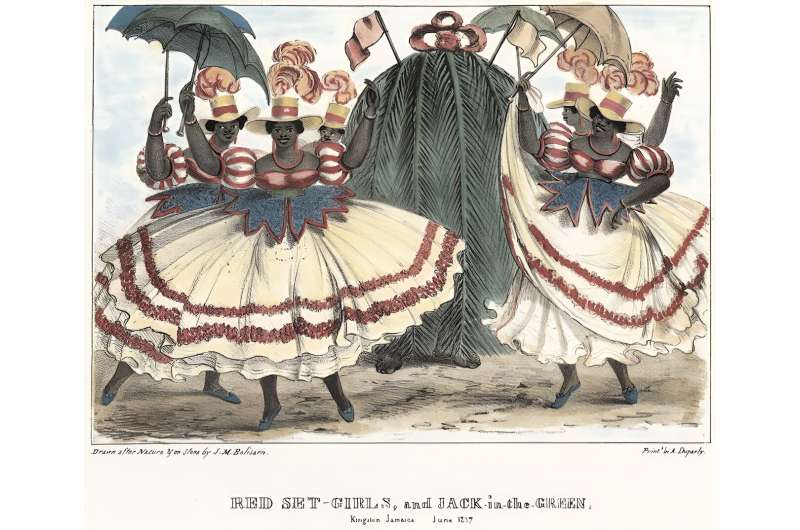This article has been reviewed according to Science X's editorial process and policies. Editors have highlighted the following attributes while ensuring the content's credibility:
fact-checked
trusted source
written by researcher(s)
proofread
Climate change is destroying reefs, but the effects are more than ecological—they're also cultural and spiritual

Hurricane Idalia made landfall on Florida's Gulf Coast on Aug. 30, 2023, bringing surging seas and winds over 100 mph. Meanwhile, another climate emergency has been unfolding along Florida's coast this summer: a marine heat wave bleaching corals throughout the world's third-largest barrier reef.
Similarly, ocean temperatures in many parts of the Atlantic and Pacific are at record highs, with reefs from Colombia to Australia showing signs of stress in recent years. Scientists warn that the world may be witnessing the start of a global coral-bleaching event, which would be the fourth on record—and while corals can survive bleaching, they won't if the waters stay warm for too long.
Large-scale reef destruction tends to be measured in biological and economic terms. Reefs support about 25% of all marine species, protect human lives and property by buffering shorelines and bolster the worldwide economy through fishing and tourism.
But coral's loss also takes an enormous spiritual, psychological and cultural toll—one of the main topics of my research and recent book, "Coral Lives." Centuries of writing, painting, storytelling and rituals show that coral has given meaning to human lives for nearly as long as we've been around to marvel at it.
Protective powers
From the Middle Ages until the 19th century, anxious new parents across Europe and North America clasped red coral necklaces and bracelets to their children's bodies and gave them red coral to hold—and even teethe on—because coral symbolized physical and spiritual protection. Early Christian art from the medieval and Renaissance periods often features the infant Jesus in red coral, which scholars suggest may also be because its color symbolized the blood of Christ.
Coral encircles the necks and wrists of babies and children in more secular portraits, too, particularly during the 18th and 19th centuries. Often a child holds the "coral and bells," a combination toy and teething aid: Children would alternately shake it as a rattle and chew on the red coral shaft to soothe sore gums.
The item was cherished by the families of presidents and poets alike, from George Washington to Henry Wadsworth Longfellow, who even wrote about it. "Coral and bells" were such a popular christening present that shops could barely keep it in stock.
For these families and countless others across centuries, coral was far more than ornamental. By giving a child coral, parents were protecting what was most precious to them: their child's life.
The birth of coral
Belief in the protective powers of coral dates to at least the classical period. According to the first-century Roman poet Ovid, coral carried petrifying powers because it originally emerged from the touch of Medusa, the snake-haired Gorgon whose stare could turn others to stone. In his epic poem "Metamorphoses," Ovid describes the hero Perseus severing Medusa's head and laying it on a bed of seaweed that then hardened into coral. By the medieval period, this story gave rise to popular beliefs that wearing coral could ward off the "evil eye."
Coral was also believed to have curative properties. In the "Historia naturalis," an encyclopedia of the natural world, Roman author Pliny the Elder wrote of the sacred and medicinal qualities of coral. The material could remedy a variety of ailments when ingested, he claimed—which also explains why people once thought it was healthy for children to chew on coral.
Modern medicine, of course, argues against these ideas. But during historical periods when child mortality rates may have been almost 50%, coral calmed anxious parents' fears.
To this day, in some parts of the world, coral continues to provide a sense of control over situations that are largely out of our hands. In southern Italy, people give one another the "cornicello" for good luck: a small, horn-shaped charm frequently made of red coral. Some rosaries, too, are still made of red coral beads, just as they were in the Middle Ages.

Community bonds
Beyond protection, coral can also symbolize belonging. Throughout the African diaspora during the 18th and 19th centuries, free and enslaved women in many communities wore red coral jewelry, particularly on special occasions, to commemorate a shared past and create new bonds.
Groups of women in Jamaica and other parts of the Caribbean, for example, wore coral necklaces, earrings and bracelets during Jonkonnu, a Christmas holiday masquerade of West African origins that incorporates traditional music and dance.
As historian Steeve O. Buckridge explains, these women used clothing and jewelry to communicate their identities nonverbally. Wearing coral was a way to preserve links to the African cultures from which slavery had severed these women. In many cultures, red coral beads were—and in some cases still are—objects of spiritual, economic and cultural significance.
In fact, coral was so valuable that it came to play a violent role in history. In coastal areas of Western Africa, coral became currency in the transatlantic slave trade: Slave traders exchanged coral for people.
But when diasporic women wore coral, it became part of their choice to create a different present and future. As scholar Elizabeth Maddock Dillon has also observed, each piece of their elaborate Jonkonnu costumes announced "not only splendor and beauty but a form of social belonging" within different "kinship groups" of their own devising. Coral simultaneously signified slavery and hope for new possibilities.
Forging the future
After the Civil War, Black communities in the United States embraced coral for another reason. During Reconstruction, as these communities struggled to create a more just country, writers, religious leaders and activists turned to reefs as an inspiring model.
Even massive coral reefs are made up of millions of microscopic animals called polyps, which many people in the 19th century understood as "laborers" working together to build the reef. According to African American poet and civil rights advocate Frances Ellen Watkins Harper, reefs expand by sustaining others, rather than devaluing or displacing them. In her 1871 poem "The Little Builders," Harper chose reefs as an analogy for how listeners and readers, Black and white, should work to build the social and financial bonds equality would depend on.
But Harper knew that outcome was by no means certain. That's why the coral analogy worked so well. As Charles Darwin explained in 1842 in a famous treatise on coral, reefs are formed by so many relationships among different individual organisms across vast periods of time that their future form and shape can only be unpredictable.
As my book shows, in that unpredictability Black writers like Harper found hope. To them it meant that the actions of one single and seemingly insignificant individual might help transform an entire system.
Grief and preservation
Coral's biological uniqueness and central role in sustaining other forms of life, including humans, are reasons enough to preserve it. And scientists are making extraordinary efforts, such as relocating threatened species to dry tanks on land and developing tools to predict marine heat waves months in advance.
But for centuries, coral has also shaped thoughts about difficult human problems, from love and loss to social injustice. Reefs have provided knowledge, stories, hopes and histories in many cultures, far beyond the handful mentioned here. As we lose coral, then, we are also losing a material that has given us vital ways to understand and act within an increasingly chaotic world.
Provided by The Conversation
This article is republished from The Conversation under a Creative Commons license. Read the original article.![]()




















